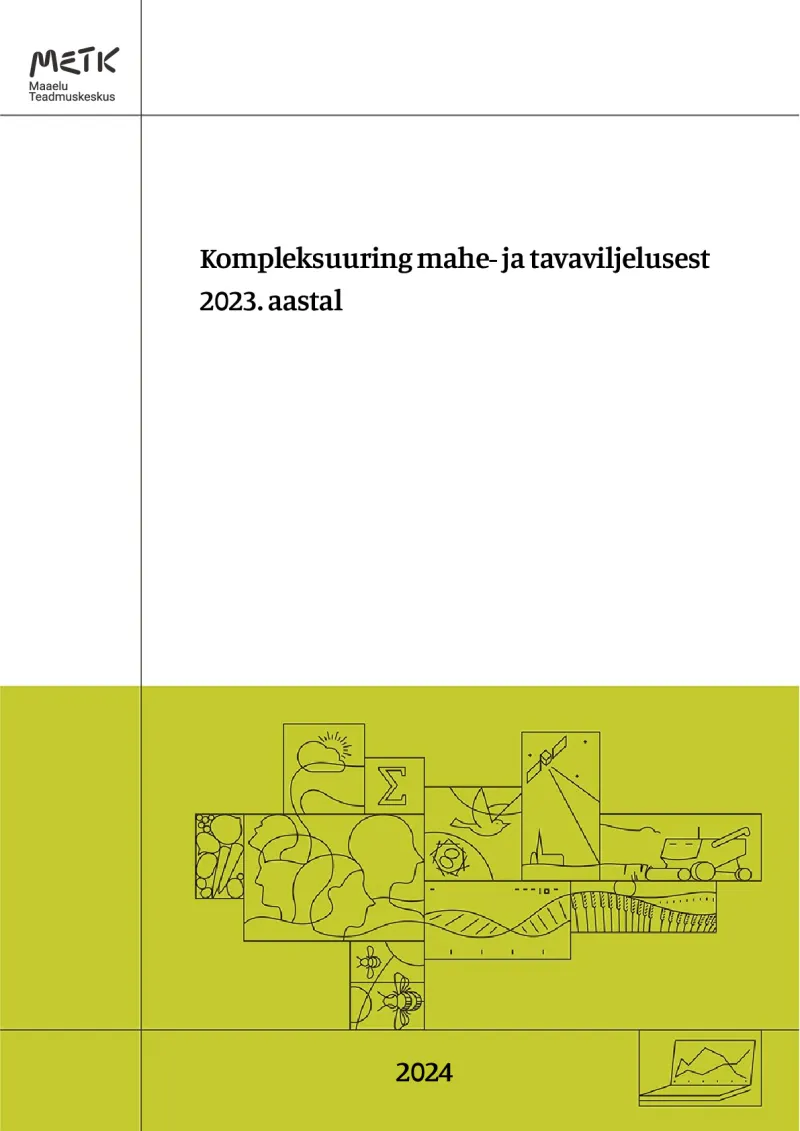Complex study on organic and conventional farming in 2023
The comparative study examines the effects of crop rotation in organic farming and agri-environmental basic support, assessing their performance and providing suggestions for future policy interventions.
- Estonia
- 2023-2027
- Environmental impacts

The complex study was established in 2003 to support policy design and develop Rural Development Programme (RDP) measures that meet specific requirements, and at the same time, identify effects and changes in the environment. The study aims to explain the changes in soil fertility, soil health and crop yield indicators in organic and conventional crop rotations over a longer period, utilising various agrotechnological solutions. The annual results are informing farmer training and policy improvements, including the proposal of monitoring indicators.
The study supports and improves policy implementation to achieve environmental objectives by testing the measure requirements in a controlled environment. The aim of the long-term comparative study is to identify the effects of crop rotation that meets the requirements of RDP organic farming and agri-environment basic support (environmentally friendly management). For the study, two crop rotations (cereal-clover and cereal intercrops) were established; one for organic farming and one for agri-environmental measures and a third for comparison that does not meet the RDP support requirements, only cereal crop rotation (cereal-mono). All crop rotations are 4-field and oriented towards plant production.
Changes in soil fertility, soil health and crop yield indicators in organic and conventional crop rotations using different agrotechnological solutions are assessed with the help of the following indicators: the content of soil nutrients and organic matter, the balance of soil nutrients, soil physical indicators, the content of soil nutrients and organic matter, soil the general balance of NPK, the activity of soil organisms, weediness of crops, crop yield and crop quality, and economic indicators, etc. According to the methodology, data on the aforementioned indicators are collected with research steps of different lengths. The studied cropping system types and agrotechnologies have been selected to be applicable in Estonian agricultural enterprises.
In conventional cultivation, catch crops formed significantly higher biomass compared to organic farming. Before the catch crop was ploughed into the soil, soil samples were taken from a 30-35 cm deep layer of a winter wheat field. The soil samples indicated that the nitrate ion (NO3-) content was minimal in the part of the field with catch crops, but the part of the field without catch crops had a significantly higher content of NO3- in both organic and conventional cultivation. Apparently, catch crops tied up part of the nutrient elements not used by winter wheat from the soil (especially nitrogen), which would have been leached without using the catch crops.
The calculation of margin income revealed that if CAP Strategic Plan supports were not considered, all production options would be in loss (in all crop rotations, both for organic and conventional farming). When supports were added to the calculation, it significantly increased the margin in organic farming. Clearly, the margin income with subsidies became positive only in the case of non-fertilisation in organic farming, specifically in the crop rotation of grain intercrops and grain-clover crop rotation, where it was also possible to apply for different subsidies (e.g., eco-schemes for environmentally friendly production and organic farming).
Author(s)
Karli Sepp (Maaelu Teadmuskeskus)